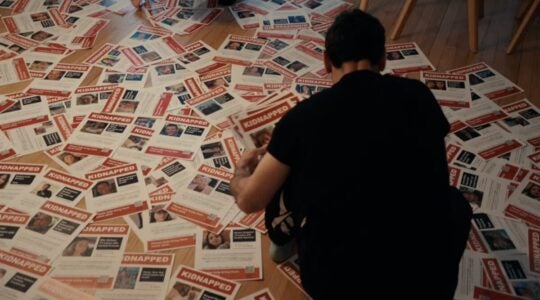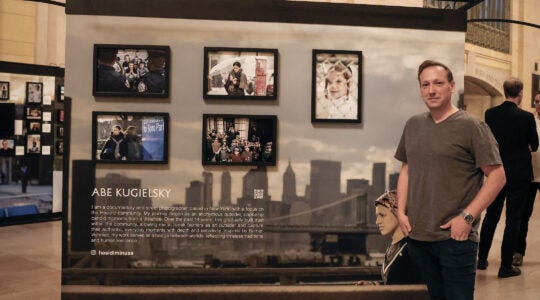So far as I know, there are two major roll calls each year in the Jewish world. One takes place each spring at the annual AIPAC convention in Washington, in which the names of hundreds of members of Congress are read aloud from the rostrum. The other took place last night, at the annual gathering of Chabad emissaries, or shluchim, in Brooklyn.
The former is a display of political power, showcasing AIPAC’s ability to get more than half the members of the world’s most powerful legislative body to show up and demonstrate their pro-Israel bona fides. The second is a show of another kind of power, the spiritual strength of a group of rabbis who sacrifice much in terms of comfort and convenience to connect thousands of far-flung Jews to their heritage.
At a time of angst in the Jewish world over the falloff in Jewish affiliation, the ranks of Chabad shluchim continue to swell. There are currently more than 4,500 around the world (twice that number if one counts, as one should, the rabbis’ wives). More than half of those have been dispatched in the nearly two decades since the death of the Lubavitcher Rebbe, Menachem Mendel Schneerson, whose eyes peered down on the gathering from a massive portrait above a rotating speakers’s podium.
The bulk of those shluchim assembled Sunday night in a marine terminal along the Brooklyn waterfront for their annual banquet, the capstone of a days-long conference, or kinus. Emissaries traveled from such remote locales as the Cayman Islands, Laos, San Martin, South Korea and Martinique, arriving at the cavernous warehouse by bus, taxi, subway and limousine. (So far as I could tell, I was the only attendee who arrived by bicycle.) And their strength was evident not only by the sea of bearded men in black suits and hats, but by the presence of their benefactors — billionaire Israeli diamond magnate Lev Leviev and the financier George Rohr foremost among them — political figures like Joe Lieberman and the former CIA director James Woosley, and representatives of other major Jewish streams, including the Union for Reform Judaism’s president, Rabbi Rick Jacobs.
The convention theme was zarach b’choshech or, a phrase from the Psalms meaning “radiate light into darkness,” and the speeches and videos were replete with metaphors of luminescence — sparks of yiddishkheit ignited, torches lit, Jewish souls set aflame. Rare in the Jewish world is a group as fired up and self-assured as this one.
Of course, the recent Pew findings hung over the kinus as they have over other recent Jewish confabs. Rabbi Moshe Kotlarsky, the vice chairman of the Chabad educational wing Merkos L’Inyonei Chinuch, called it a “clarion wake-up call.” But unlike other sectors of the Jewish institutional world, which are struggling to formulate a workable strategy to stem the tide of apathy and assimilation, the Chabad shluchim know exactly what their mission is. In the words of Rabbi Dov Greenberg, the Chabad emissary at Stanford University, it is to act as shepherds for wayward Jewish souls, persuading them to participate in some act of Jewish ritual, however small and fleeting, in the hopes of igniting a passion for Jewish observance. And if that passion isn’t ignited, that’s fine too. The power is in the act itself.
As an academic working on a study of Chabad’s impact on campus told me, the standard metrics of Jewish engagement don’t easily apply to Chabad’s outreach efforts. Chabad rabbis are happy if a man puts on teffilin once, or a woman lights sabbath candles. Affiliation, membership, financial support — these are all welcomed. But if a Chabad rabbi can persuade one Jew to do a single mitzvah, it’s a success.
“You do one mitzvah…,” Kotlarsky said. “And you can change the world.” He then announced an initiative to get each emissary to reach 20 people in their communities they had never had contact with before. To what end? To get them each to do a single mitzvah.
To believe in the power of that kind of act one has to — well, believe. In the professionalized ranks of Jewish institutional life, the power of single ritual acts don’t register very loudly — at least not with the academic studies that evaluate the effectiveness of Jewish initiatives. Private devotions are often less valued than public (and more easily measurable) ones, like synagogue membership or Hebrew school attendance.
For Chabad, the measure is the individual, not the institution. And there’s a level of uncompromising absolutism in their rhetoric that would make most Jewish organizations blush.
Kotlarsky thundered that even if an emissary reached every Jew in a city, except for one, the mission would not have been fulfilled.
“Until we reach each and every Jew in the community, in the state, in the city, in the country that shliach is charged with, we cannot sit back and relax,” he said.
JTA has documented Jewish history in real-time for over a century. Keep our journalism strong by joining us in supporting independent, award-winning reporting.





